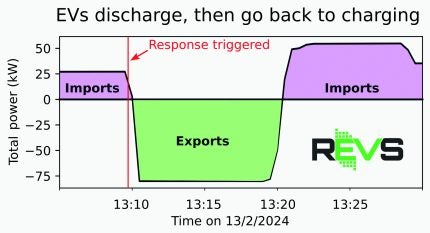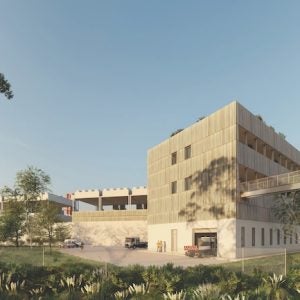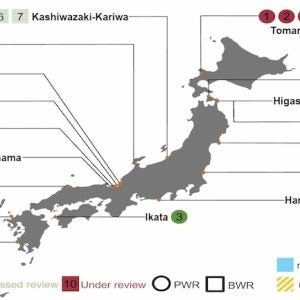
The lead author of the study, Senior Research Fellow Dr Bjorn Sturmberg, says it’s the first time in the world this type of vehicle-to-grid response to an emergency has been demonstrated. “It shows electric vehicles can provide the backup we need in an emergency like this,” he said.
“We have a fleet of 51 [Nissan LEAF] EVs across Canberra that monitor the grid whenever they’re plugged in and can quickly inject short bursts of power to rebalance the system if the national grid rapidly loses power. They’re essentially big batteries on wheels.”
“The event in February — caused by storms in Victoria — was the first real-world test of our vehicles and chargers. We now know a vehicle-to-grid system can work.”
The fleet of 51 EVs is deployed as part of the Realising Electric Vehicle-to-Grid Services (REVS) project, together with 51 bidirectional chargers and charge control systems designed to provide frequency support services. REVS participants include: Australian Renewable Energy Agency (funder); ANU; ACT government (fleet owner); SG Fleet Australia (fleet operator); JET Charge; Nissan Motor Co.; ActewAGL Distribution; and Evoenergy.
At the time of the 13 February 2024 weather event, which caused 90 000 electricity consumers in Melbourne to lose electricity supply, 16 EVs were plugged in at six properties across Canberra (about 500 km from the location of the downed transmission lines that caused the contingency). Four were charging, while 12 were idle.

Within seconds all the vehicles started discharging power into the grid, “as they’ve been programmed to do,” Dr Sturmberg said.
“In total, they provided 107 kilowatts of support to the national grid. To put that in perspective, 105 000 vehicles responding in this way would fully cover the backup required for the whole of the ACT and NSW.
“For context, there were just under 100 000 EVs sold in Australia last year.”
Dr Sturmberg said there is still work to be done to balance the growing demand for vehicle charging with grid security.
“With the number of EVs on our roads growing fast, the grid won’t be able to cope with everyone charging at the same time when they get home in the evening,” he said.
“Additionally, in the case of the February emergency, once the vehicles had provided power for ten minutes some resumed charging by default. There would be little cost or inconvenience in delaying charging for an hour or two in this kind of situation.
“It may call for an industry adjustment, for instance, to require EV manufacturers to program their vehicles to stop charging during a grid emergency, with an option for drivers to override for urgent charging.
“Stopping just 6000 EVs charging would have kept the power on for those 90 000 customers whose power was cut on 13 February.
The February event also illustrated how well-managed unidirectional (ie, non V2G) EV charging can make a substantial contribution to power system security. There were 23 non-V2G-enabled EVs plugged in at the six properties during the February event, which were charging at an average of 30.8 kW. Stopping this charging, together with the charging of the four V2G EVs that were charging at the outset of the contingency, would have created a contribution of 57.9 kW to power system frequency restoration without the use of V2G.
“Our results show that vehicle-to-grid can be a powerful contributor to our power system’s security, and that all electric vehicles have an important role to play,” concludes Dr Sturmberg.
*Bjorn C. P. Sturmberg, Kathryn Lucas-Healey, Laura Jones et al. Vehicle-to-grid response to a frequency contingency in a national grid – successes and shortcomings, 4 June 2024, preprint (Version 1) available at Research Square [https://doi.org/10.21203/rs.3.rs-4445838/v1]






